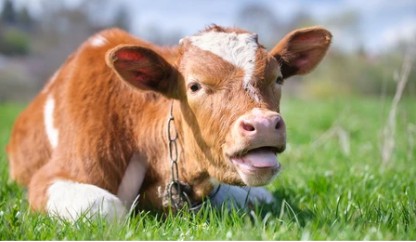Forages are a major source of nutrition for herbivores around the world. Sometimes, the balance of nutrients in forage or the presence of secondary compounds can negatively affect the health of herbivores. Some toxic compounds are naturally occurring. Others are caused by insect infestations, while others are caused by microbial activity. As spring approaches and grasses begin to grow, grazing livestock may experience forage-induced animal diseases, including pasture bloat, milk fever, grass hand-foot convulsions or hypomagnesemia, hoof foliitis, nitrate toxicity, mineral deficiencies and imbalances, and the effects of toxic secondary compounds. Acute bovine emphysema or atypical interstitial pneumonia may occur when cattle are moved from sparse, dry pastures to dense grass, legume, or brassica pastures. Although the role of these forages in animal production may vary depending on regional preferences for animal and forage species, climate, and resources, their importance in ruminant production success has been recognized.

Based on years of experience in forage research, Lifeasible is the ideal forage service partner. We have advanced detection systems to identify forage-related animal diseases. In addition, we develop sustainable forage-based animal production systems that enhance animal production for quality food by improving the nutritional value of grasses and other forage plants. Our services include:
We offer a combination of forage legumes, fresh or preserved grasses, crop residues, and other feeds to help develop cost-effective, beneficial, and viable animal production systems. In addition, we help you rationalize the use of supplements and herbal additives as ideal alternatives to traditional growth promoters that help optimize ruminant production.
Working closely with plant breeders, we identify toxins associated with specific forage legume species.
Common grasses contain small amounts of intrinsic toxins. More common are fungal toxins produced by fungi living in or on grasses. Working closely with biologists, we identify toxins inherent in grasses associated with fungi.
Get out in the field now and evaluate your forages. If you have a lot of legumes on your pasture, please develop and implement management strategies to reduce livestock losses. We have advanced detection systems to identify forage-related animal diseases. We look forward to working with you. For more information or to discuss in detail, please contact us.